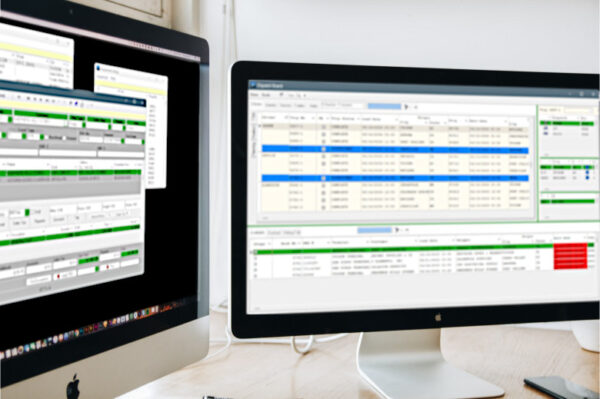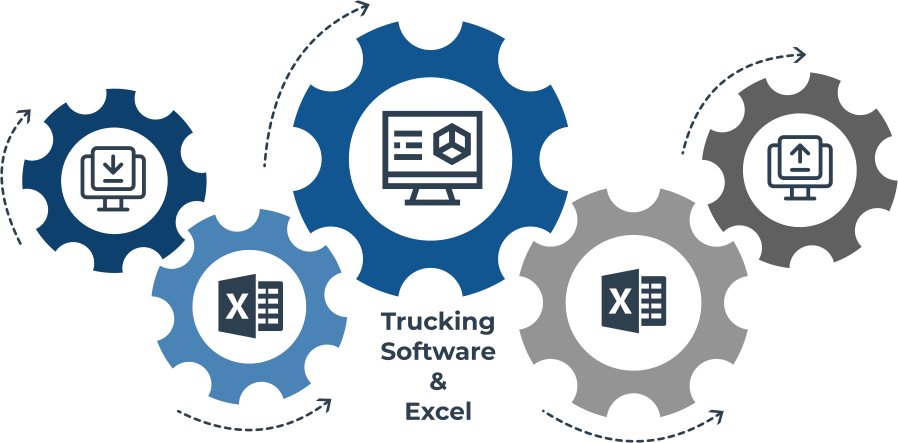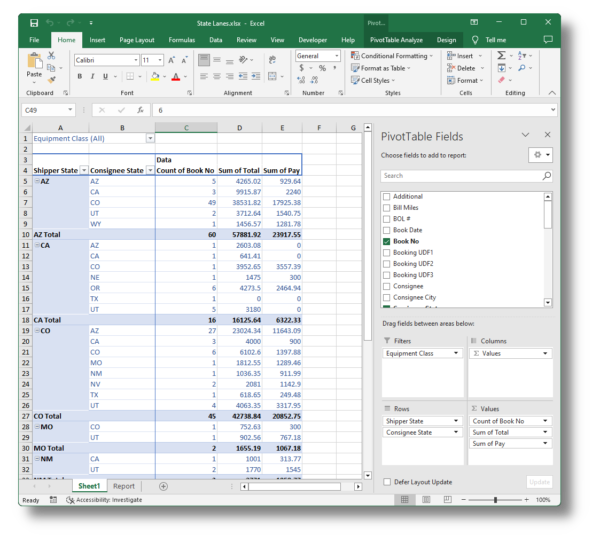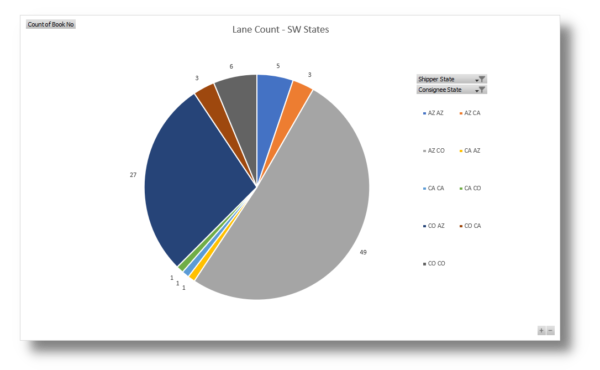Excel is a familiar tool in the trucking industry. It’s available on most computers and doesn’t require additional software purchases or installations. This ease-of-access means trucking companies can use Excel for basic data management.
On the other hand, trucking software provides tailored solutions that address the unique needs and challenges of the industry.
In this article, we’ll explore the advantages of using trucking software instead of Excel as your main platform, but how using Excel as a side kick plays a key roll in effectively running your operation.
Trucking Software Has Solutions That Excel Doesn’t
Trucking software provides a wide range of important capabilities for managing a trucking company. Most software platforms integrate with other systems and platforms. That facilitates smooth data exchange, like automated communication with drivers and shippers, and real-time load tracking.
Trucking software offers built-in compliance management features, like automating tasks, driver qualification, and IFTA reporting. Unlike Excel, which requires manual tracking and monitoring, trucking software ensures that you’re adhering to regulatory standards. These kinds of features save time and reduce headaches.
Trucking software is geared toward industry-specific accounting, too. The trucking industry can have some very complex accounting procedures. Excel isn’t always fit to handle scenarios like factoring your invoices, or handling complex pay tiers for drivers based on weight or distance.
Not to mention, if you do manage to put together an Excel workbook for handling trucking accounting or dispatch management, and something goes wrong, then you need to find a way to put it back together. Trucking software is already designed for the specific needs of your trucking company.

So… Should Excel Play a Role in a Trucking Company?
Absolutely! Excel is known for its friendly interface. Plus, you can find practically anything you need to do in Excel just by doing a quick online search. Let’s break down the ways Excel can be a helpful side kick to your trucking software.
Enhance Data Analysis & Reporting
Excel’s robust data analysis and reporting capabilities can really enhance your trucking software. Use its tools to create insights and visualize trends. For example, throughout the month, loads are being booked, invoiced, and paid to the drivers or carriers. All of that data is in your trucking software database. Your software has a stack of trucking industry specific reports, but it’s important to analyze your data in various ways. Export that data to Excel!
In Excel, you can get really creative with tools like PivotTables. PivotTables let you create endless, unique combinations of data. You can save the source data and all of your tables in a single, centralized workbook for future use.
Once you have the tables, you can even create pie charts or graphs for a visual you can share with investors.
Using Excel for more deeply analyzing your trucking software data is a great way to wrap your arms around operations in even more meaningful ways.
Send Batches of Data Using Excel
Excel really serves a purpose when it comes to large batches of data that you need to share with someone else. For example, if you have a high load volume, your shippers might prefer an Excel spreadsheet that contains all loads for a period of time, instead of an invoice report from the software itself. Trucking software is geared toward the industry, so it will have all of the invoicing features that you need, including exporting load data to Excel for sharing. The recipient can now import that data into their own software platform.
Accountants like to work with the general ledger postings for a period of time using Excel. Leave the account postings to the trucking software, then export all postings for a period of time to Excel for the accountant to work with.

Feeding Data From Excel to Trucking Software
The partnership benefits between trucking software and Excel goes both ways! You can use Excel as a middle man to get data from some other source into your trucking software.
- These days, you can export your monthly bank statement into an Excel .CSV format. Import that report into your trucking software to whip through reconciling the bank statement.
- If your operation has a high volume of loads, some of your shippers might be able to send you all of the load details in an Excel spreadsheet. That data can be imported into your trucking software to generate the booked loads automatically.
- Fuel card providers have online portals where you can download all of the fuel and other transactions for a period of time in an Excel spreadsheet. That data can be imported into your trucking software to generate your expenses, create deductions, and post important information for filing IFTA.
These are just a couple of ways that your trucking software can be the beneficiary of what Excel has to offer. Excel macros let you convert source data into something your trucking software will accept. This makes Excel a powerful tool for source data and saving time in data entry in the trucking software.
Conclusion
Excel clearly brings a lot to the table when running a trucking company. But as a trucking company grows in size and complexity, using trucking software as the main data management platform is important. The industry-specific functionality and features are key to optimizing success.
The team at Frontline Software understand the importance of using Excel as a tool for trucking software. Contact us for a free demonstration.


